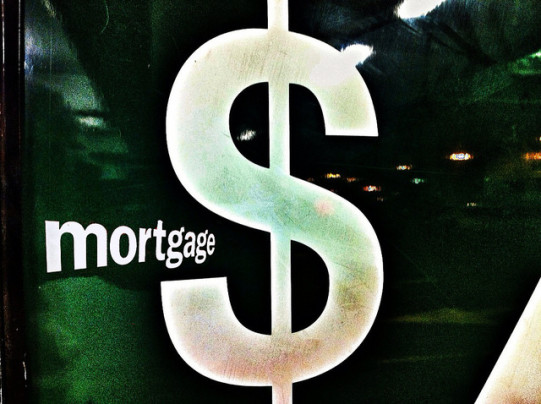Among the features typically thought of as desirable to the average home buyer, big back yards, good schools, and proximity to work and public transportation usually get ranked near the top of the list. But, according to a new survey from the Demand Institute, much of the conventional wisdom on what home buyers are looking for is wrong. For example, proximity to public transportation is often named as a key feature buyers want but the survey found just 25 percent of respondents said it was very important to them, while 44 percent said it wasn’t important at all. Similarly, good schools and closeness to work were more likely to be ranked as not important than very important. So what do buyers really want in a new house? Well, pet friendliness ranked highly with participants, as did big windows, storage space, and an in-unit washer/dryer. But the top rated feature respondents said would be very important to them in a new home was central air conditioning, which was named by 75 percent of surveyed consumers. The takeaway seems to be that, while proximity to the office and a large yard will always be popular with some home buyers, to others it makes no difference. In other words, there is a buyer for almost every home, with the possible exception of those without central air. More here.
Archive for July 2015
Realtors Remain Confident In Housing Market
For the fifth consecutive month, the National Association of Realtors’ Confidence Index found more real estate professionals feel the housing market’s six-month outlook is strong than those that feel it’s weak. The fact that a majority of Realtors continue to feel optimistic that the housing market will remain strong over the next several months is a good sign for both home buyers and sellers. That’s because Realtors have an insiders’ perspective on whether or not homes are selling, buyers are interested, and markets are improving. And, though there are still concerns about low inventory and rising mortgage rates, their general view is that conditions have improved significantly from last year and will continue to make gains. Some of the numbers behind their optimistic view include the fact that a larger number of first-time buyers are active in the market. In fact, first timers accounted for 32 percent of home sales in May, compared to 27 percent one year earlier. And, though first-time home buyers typically account for somewhere closer to 40 percent of home sales, the improvement is an indication that pent-up demand is finally being released due to better economic conditions and an improved labor market. Also in the report, the typical home sold within 40 days of being put on the market. More here.
Mortgage Rate Drop Spurs Demand
According to the Mortgage Bankers Association’s Weekly Applications Survey, average mortgage rates fell across all loan categories last week, including 30-year fixed-rate loans with both conforming and jumbo balances, loans backed by the Federal Housing Administration, and 15-year fixed-rate mortgages. With rates down, demand for loan applications jumped. In fact, refinance activity was up 3 percent and demand for loans to buy homes climbed 7 percent from one week earlier. The unadjusted purchase index is now 32 percent higher than the same week last year. Lynn Fisher, MBA’s vice president of research and economics, told CNBC that the trend in mortgage applications is evidence that more people are buying homes. “Overall, trends in mortgage applications last week were consistent with the ongoing shift towards a purchase market accompanied by growth in employment and higher interest rates,” Fisher said. The MBA’s weekly survey has been conducted since 1990 and covers 75 percent of all retail residential mortgage applications. More here.
More Homeowners Say Now’s The Time To Sell
The results of Fannie Mae’s June National Housing Survey may be an indication that an increasing number of current homeowners are thinking of putting their home up for sale. That’s because a record number of survey respondents said now was a good time to sell a house. In fact, 52 percent of participants thought so, a new survey high and the first time a majority said it was a good time to put a house on the market. That’s good news for housing and potential home buyers. With an uptick in the number of existing homes available for sale, upward pressure on prices should moderate. That means, more choices and better prices for buyers. Combined with the fact that Fannie Mae’s survey also found 60 percent of Americans believe that rental prices will continue to rise over the next year, consumer attitudes may point to continued gains for the real estate market. Doug Duncan, Fannie Mae’s senior vice president and chief economist, said the results show the positive impact of job and income growth. “The expectation of higher rents is a natural outgrowth of increasing household formation by newly employed individuals putting upward pressure on rental rates,” Duncan said. “A complementary rise in the good time to sell measure suggests that limited inventory, which is putting upward pressure on house prices, gives an increasing advantage to sellers. Together, these results point to a healthier home purchase market, with more renters likely to find owning to be more cost-effective than renting and more sellers likely to put their homes on the market.” More here.
Americans Want To Buy But Many Have Misconceptions
A new survey conducted by Ipsos Public Affairs found a majority of Americans want to buy a home and think now is a good time to do it. In fact, a full 65 percent of respondents said they feel homeownership would be a dream come true or an accomplishment to be proud of and 72 percent said now is a good time to buy. The survey also found very few current renters who said they’d prefer to continue renting. In fact, just one in ten said they prefer renting to owning. But despite their desire to own their own home, many Americans have misconceptions about what is required to achieve that goal. For example, the survey found two-thirds of participants believed they’d need very good credit in order to qualify for a home loan and nearly half thought a good credit score was something over 780. In fact, 780 is typically considered an excellent credit score. Prospective home buyers were also scared off by the down payment. Many believed that a 20 percent down payment was always required to buy a house. However, depending on the type of loan, down payment requirements can be as low as 3.5 percent. In addition to that, there are many assistance programs available to buyers who need help coming up with a down payment. More here.
90% Of Markets More Affordable Than Historic Average
A recent report from RealtyTrac and Down Payment Resource looked at affordability, median income, median home price and down payment assistance programs in 370 U.S. Counties with a population of at least 100,000. The analysis ranked each county based on its affordability and accessibility for low down payment buyers, such as first-time home buyers. The findings show 90 percent of the included counties were more affordable in April 2015 than their historic averages. Daren Blomquist, vice president at RealtyTrac, said there are opportunities for buyers in most local housing markets across the country. “This analysis demonstrates that low down payment borrowers can find affordable housing and good accessibility to down payment help in a wide variety of markets nationwide,” Blomquist said. “However, within many major metro areas the most affordable and accessible markets for low down payment buyers are often those furthest from jobs and other amenities that many buyers want.” Still, though housing affordability has been affected by recent price increases and rising mortgage rates, it remains a good time to buy a home due to the availability of lower down payment requirements and the fact that rates remain well below historic norms. More here.
Mortgage Rates Rise Again After Fall
According to the Mortgage Bankers Association’s Weekly Applications Survey, average mortgage rates increased last week after falling the week before. Mortgage rate increases were seen across all loan categories including 30-year fixed-rate mortgages with both conforming and jumbo balances, loans backed by the Federal Housing Administration, and 15-year fixed-rate mortgages. The rate increase caused a drop in demand for mortgage loans, with both the refinance and purchase index falling from one-week earlier. Refinance activity, which is most sensitive to rate fluctuations, fell 5 percent, while purchase activity was down 4 percent. Despite the drop, however, demand for loans to buy homes is still much higher than last year at the same time. In fact, purchase application demand is 14 percent higher than the same week one year ago. And because purchase application demand is a good indicator of future home sales, the year-over-year improvement signals a strong first half of the year for home sales. The MBA’s weekly survey has been conducted since 1990 and covers 75 percent of all retail residential mortgage applications. More here.







